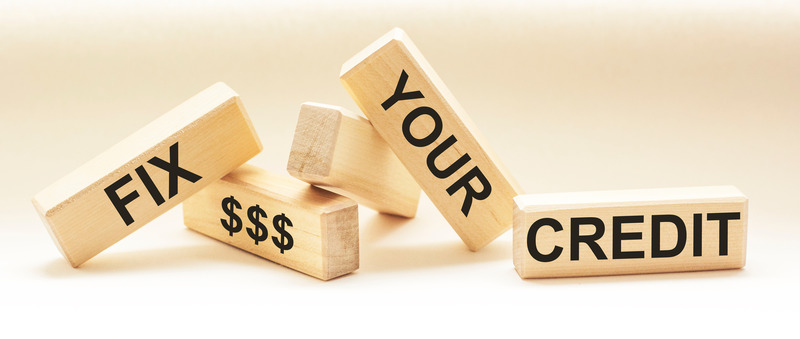Steve Carpenter oversees business operations, sales, P&L, product and data. With an impressive 16-year tenure at Creditsafe, Steve has played an integral role in the company's international expansion efforts, spearheading global data acquisition and fostering global partnerships.
Understanding business credit
Before diving into the steps to build business credit, it's crucial to understand what business credit is, why it matters and how you can build and improve your business credit score.
Imagine your business credit as your financial reputation in the corporate world. It's like a report card showcasing how well you handle money and fulfill financial obligations as a company. This reputation significantly impacts on your ability to secure loans, negotiate deals with suppliers and even attract potential investors. Building good business credit entails consistently paying bills on time, maintaining healthy relationships with vendors and managing credit responsibly. By doing so, you not only unlock better financing opportunities but also earn trust from partners and investors, paving the way for long-term growth and success.

Get a better understanding of your business credit profile
Business credit score tips
1. Check your credit report to ensure everything is correct and accurate
Regularly reviewing your business credit report is like giving your financial health a check-up. It allows you to spot any errors or discrepancies that might be dragging down your credit score. Accuracy in your credit report is incredibly important because it forms the basis of your business credit profile.
Imagine you've been diligently managing your business finances, only to discover that your credit report contains errors or inaccuracies. For instance, a supplier might have mistakenly reported a late payment, or there could be outdated information from a previous business venture. Without regular checks, these errors can go unnoticed and harm your business credit score. As a result, when you apply for financing or negotiate with suppliers, you may encounter higher interest rates or unfavorable terms because of your inaccurate credit profile.
2. Ask your suppliers to share their trade payment data with credit bureaus
When suppliers report your on-time payments to credit bureaus, it strengthens your creditworthiness. This not only helps in increasing your credit score but also opens doors to better financing options and favorable terms with suppliers. Imagine you're a construction company consistently paying your material suppliers on time. When these suppliers report your prompt payments, it showcases your reliability, and enhances your business credit.
You could have been faithfully paying your suppliers on time, but this information may not be reported to credit bureaus. Without this data, your history of timely payments goes unrecognized, potentially hindering your ability to access better financing options or negotiate favorable terms. When seeking a business loan or credit line, lenders may perceive you as a higher risk borrower, leading to lower credit limits or higher interest rates. By proactively requesting your suppliers to report on your payments, you ensure that your creditworthiness accurately reflects your financial responsibility.

3. Manage cash flow effectively
Analyzing your cash flow patterns from previous years helps you anticipate seasonal dips or financial challenges. A retail business might experience a surge in sales during the holiday season, but a slowdown during off-peak months. By understanding these trends, you can allocate resources wisely and ensure smooth operations throughout the year.
Consider a retail business gearing up for the holiday season without analyzing its cash flow patterns from previous years. Without proper planning, they might overspend on inventory or marketing campaigns, only to face a cash crunch during slower months. This can lead to missed opportunities, strained relationships with suppliers and even difficulties meeting payroll obligations. By forecasting cash flow and anticipating seasonal fluctuations, businesses can allocate resources strategically, ensuring stability and agility throughout the year.
4. Integrate credit risk data into your sales ledger
By incorporating credit risk data into your sales ledger, you gain insights into your customers' payment behaviors. This enables you to identify high-risk customers and take proactive measures to mitigate potential losses. For example, if you notice a customer consistently delaying payments, you can adjust credit terms or implement stricter payment policies to minimize financial risks.
A customer could suddenly begin delaying payments or showing signs of financial distress. Without insights into their creditworthiness, you might continue extending credit without realizing the increased risk. This can result in mounting accounts receivable, cash flow constraints, and potential write-offs. By integrating credit risk data into your sales ledger, you can proactively identify high-risk customers and implement measures such as adjusting credit terms or requiring upfront payments to mitigate potential losses.

5. Regularly monitor your existing customers' credit reports
Keeping an eye on your existing customers' credit reports helps in predicting potential issues with cash flow and possible late payments. If a long-standing customer suddenly experiences financial difficulties or a decline in creditworthiness, it could signal a red flag for your business. By staying informed, you can take preemptive actions such as adjusting credit terms or diversifying your customer base to safeguard against potential losses.
One of your key customers, with whom you've had a long-standing relationship, could experience a sudden decline in creditworthiness. They could begin delaying payments or defaulting on their obligations without any warning. This unexpected development could then have ripple effects on your business, impacting cash flow and profitability. By staying vigilant and monitoring your customers' credit reports, you can detect warning signs early and take proactive steps to minimize potential disruptions. For instance, you might adjust credit terms, diversify your customer base, or initiate collection efforts to mitigate losses.

About the Author
Steve Carpenter, Country Director, North America, Creditsafe
Get a better understanding of your customers' financial health with Creditsafe
Common business credit mistakes to avoid
Navigating the world of business credit can be tricky, but steering clear of these common pitfalls will set you on the right path to financial success:
Neglecting to monitor and manage your business credit profile: Ignoring your business credit profile is like driving blindfolded. Regularly monitoring and managing it ensures you're aware of any changes or issues that may arise, allowing you to address them promptly.
Making late payments or defaulting on financial obligations: Timely payments are crucial for maintaining a positive credit history. Late payments or defaults can tarnish your reputation and make it harder to secure credit in the future.
Applying for too much credit at once: While access to credit can fuel business growth, applying for multiple credit accounts simultaneously can raise red flags with lenders and negatively impact your credit score. Be strategic and selective in your credit applications.
Ignoring errors or inaccuracies on your credit report: Your credit report is your financial resume and errors or inaccuracies can have serious consequences. Regularly review your credit report for any discrepancies and take steps to correct them promptly to ensure an accurate reflection of your creditworthiness. This can also help to protect your credit score.

Examples of companies that have improved business credit
JAS Worldwide, a major player in global logistics across over 100 countries, significantly boosted its business credit thanks to a smart move: teaming up with Creditsafe. Facing issues like inconsistent credit risk assessments and confusing data, Josh Simon, their Global Risk & Receivables Director, decided it was time for a change. By bringing Creditsafe onboard, they made it easier for their team to understand and use credit data effectively. With clearer insights into customer credit and corporate structures, they got a better handle on cash flow. The result? They slashed their Days Sales Outstanding (DSO) by a whopping 33%. This success not only improved their credit management but also gave them an edge in the market and helped them make smarter decisions about mergers and acquisitions.
Wayne Pipe & Supply Inc. have also looked to Creditsafe to improve their business credit. They were dealing with a messy situation when Teri Williams stepped in as their new controller. There were lots of accounts in a mess and some old debts that needed sorting out. Teri wanted to change things up for the better, so she turned to Creditsafe for help. With Creditsafe, they made the onboarding process smoother by looking at things like how reliable a customer was and their credit history. They also kept an eye on how customers paid their bills. As a result, Wayne Pipe & Supply Inc. saw things like faster customer sign-ups, better payment rates, and updated credit limits.
